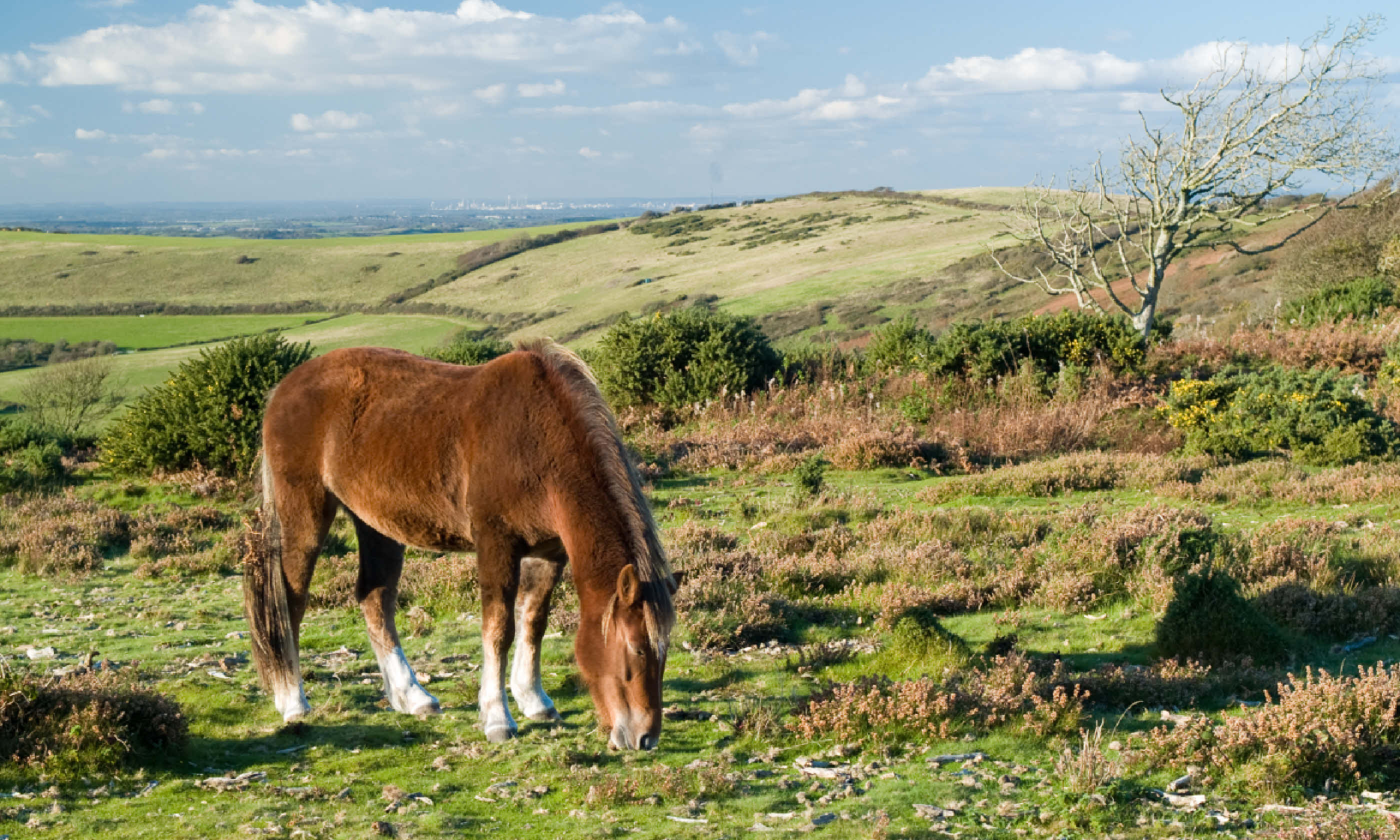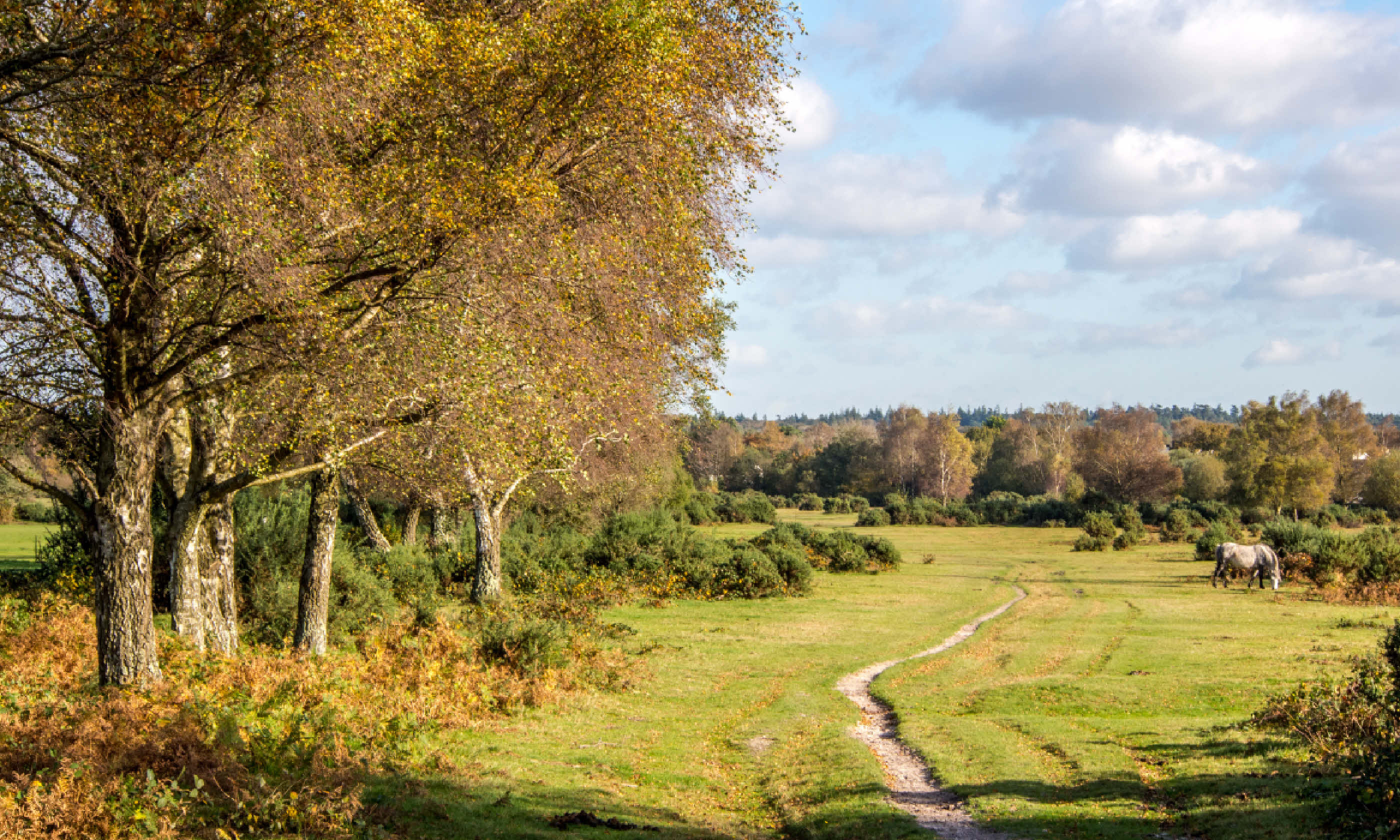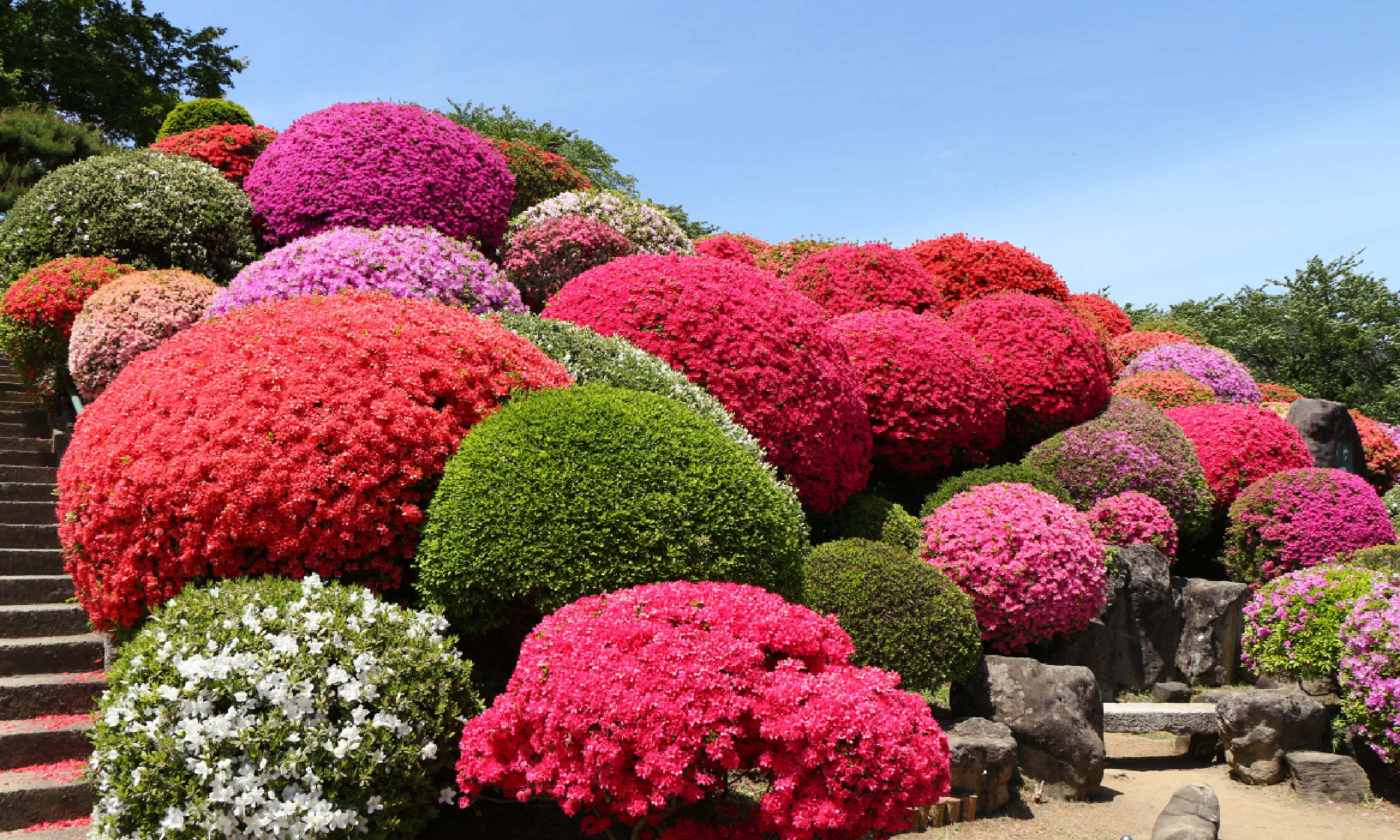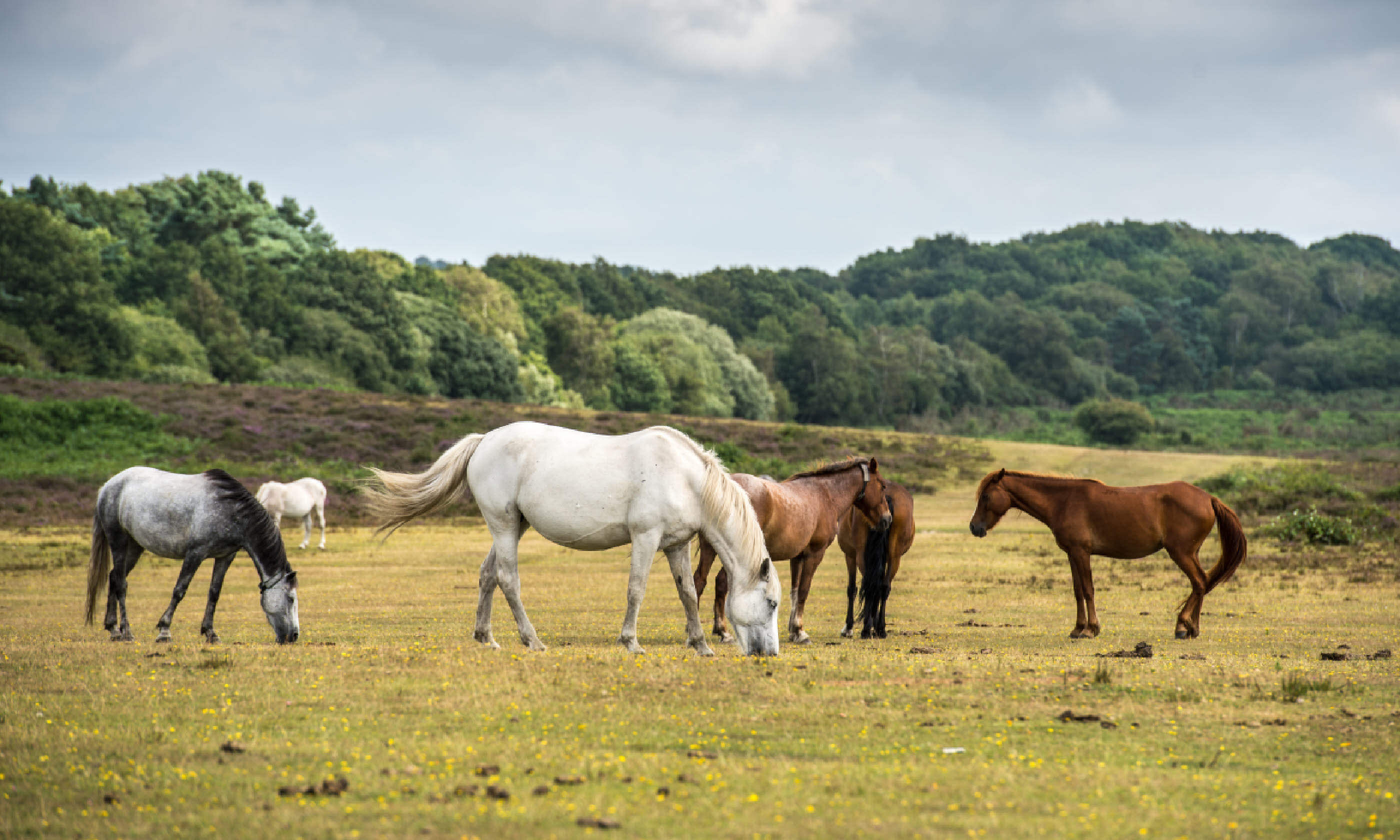
Short break in the New Forest, UK
It might be largely lacking in trees, but there’s much to delight in Hampshire’s gently wild, pony-grazed, coast-fronting national park
Gaze out over the gently undulating New Forest and you see mainly heathland, dotted with gorse and bracken. “It’s not new... and it’s not a forest in many people’s thinking,” says guide Harry Oram, former Chief Forester of the New Forest. “But it was new in 1079. And a forest was not about trees – it was a hunting ground for a duke or king. That’s what this was.”
Back before the Norman Conquest of 1066, this area was known as Ytene, after an Anglo Saxon tribe called the Jutes. But William the Conqueror saw this as the perfect spot for pursuing his passion for hunting deer. Today there are still deer here – five species in fact, although they are shy and rarely seen by the 13 million visitors that drop by each year. But everyone sees the ponies: 3,000 of them graze the heath and pasture, and saunter along roads and through villages as if they own them.
Although often described as wild, the ponies are all owned by residents who have Commoners’ Rights. The ponies are rounded up each year in what are known as drifts, to be checked over and, if necessary, branded. Cuts in their tails denote that they have been checked over by an agister, an employee of the forest, and that the fee for keeping them in the New Forest has been collected.
In recent decades, too many foals were being born, resulting in poorer quality and plummeting prices; many ended up as pet food. Now just ten stallions, considered the strongest and best, are put out to run with the mares. They are moved each year to facilitate genetic diversity. Pony management is all part of the strategy necessary to preserve the New Forest, the largest area of pasture in Europe. “We’ve still got 90% of it because the soil was so poor that it wasn’t lost to agriculture,” explains Harry.
Verderers – officials put in place by William the Conqueror to manage his hunting grounds – still administer the forest and the Commoners’ Rights, even now that is it designated a national park. They sit in court once a month in Lyndhurst, addressing any issues that arise. Few of the many millions of annual visitors to the park are aware of the ancient traditions still being upheld.
 New Forest (Shutterstock)
New Forest (Shutterstock)
The vast majority of visitors are daytrippers, looking to enjoy the gently wild scenery and the feeling of space. But, increasingly, the New Forest is also becoming known as a foodie heaven, as well as gaining a reputation for its abundance of characterful and boutiquey places to stay. And, like blotting paper, the park absorbs all of those visitors. Walk, cycle or ride more than a few hundred metres from a road and you can explore for hours without seeing anyone. Well, just a pony or two.
When to go: The New Forest is a year-round destination, although you may want to avoid the school holidays if you can. May is a great month for seeing foals, and also for spring flowers (it’s a good time to visit
Exbury Gardens). Autumn is another special time – you’ll see fall colours, pigs snuffling in the forest (the traditional practice of releasing domestic pigs to feed on acorns and nuts is known as pannage) and migrating birds on the coast.
Getting there & around: Trains run from London Waterloo to Brockenhurst (90mins) and Sway (1hr 45mins). If driving, note that there is a 40m/h speed limit imposed throughout much of the forest, due to animals wandering on the road. Bicycles can be easily hired throughout the area.
Where to stay: The award-winning, eco-friendly
Cottage Lodge in Brockenhurst makes a great base. Each of the 15 bedrooms is individually decorated, and many have beds and furniture made by local tree surgeon Rob Dyer. Local produce is used in the fab breakfasts. Doubles from £60; three-night midweek winter breaks from £198 for two sharing. Other suggestions include
East End Arms near Lymington, the
White Buck in Burley and
The Pig in Brockenhurst.
Where to eat: The
White Buck is a dog- and horse-friendly inn, and a good spot to finish a walk. The
Silver Hind in Sway is a dog-friendly gastropub.
The Pig is known for its foraged and home-grown menu. For further information, check out
thenewforest.co.uk.
 Exbury Gardens
Exbury Gardens
Day 1: Get your bearings
Take a
minibus tour with Harry Oram, former Chief Forester of the New Forest. Harry gives unique insights and can often find deer. You may even get to see inside Lyndhurst’s Verderers’ Court. Harry’s route usually takes in Rhinefield Ornamental Drive with its magnificent Douglas firs and redwoods, Bolderwood’s deer-viewing platforms and the Rufus Stone (where King William II was killed in 1100); you also get to meet people who live and work in the forest.
Alternatively, there is an
open top bus that tours the forest in the summer months. Or simply drive or cycle around the main villages. The official visitor centre is in Lyndhurst; pick up leaflets and advice.
Mosey around Brockenhurst. Don’t don’t be surprised if ponies or donkeys are ambling down the main street; indeed, follow them to the village ford, known as the Watersplash. Note that the houses have cattle grids in their drives, to keep the pesky ponies out!
From here, enjoy a leg stretch straight out into the open forest. Relax with a drink in The Foresters Arms or The Snakecatcher, before dining at one of Brockenhurst’s restaurants.
Day 2: Get active
Even when the New Forest is at its busiest, it’s still easy to escape the crowds once you leave the roads and car parks. And, in any case, walking, cycling or horseriding are the best ways to enjoy the park’s beauty. Walkers and cyclists can download numerous routes, or pick up books at the visitor centre.
A
walking festival, comprising a range of guided walks, runs in the second half of October. Cycle hire is available from several places, including Cycle Experience next to
Brockenhurst Station. For 2016 the Park Authority has joined forces with Garmin to offer free hire of GPS devices with pre-loaded cycle routes, available through the main cycle hire companies. However, the open heathland and forest paths are perhaps best explored on horse-back.
For something a little different, even novice cowboys can try a two-hour Western riding experience at
Burley-Villa School of Riding in New Milton – yee-haw! For a more conventional experience, other riding outfits include
Ford Farm, near Brockenhurst and
Burley Manor Riding Stables.
 Ponies in New Forest (Shutterstock)
Ponies in New Forest (Shutterstock)
Day 3: Head to the sea
Lymington is a handsome Georgian town on the Solent, at the mouth of the Lymington River. It’s a yachty haven, and hardy types can swim in the outdoor seawater Lido. The 100km Solent Way runs through Lymington; follow it out of town into the nature reserve, a series of lagoons, salt marshes and mud flats, home to many species of birds. You can carry on walking all the way west to Milford-on- Sea and Hurst Castle. Or take a circular route and enjoy Lymington’s shops and cafés.
In the 18th and 19th centuries, many trees in the New Forest were felled for ship building. The hamlet of
Buckler’s Hard on the Beaulieu River (and part of the Beaulieu Estate) was where many of these boats were built. Today, you can visit the small museum and cottages, before a restorative drink or lunch in the bar at
The Master Builder’s Hotel.
From here it’s a lovely 3km riverside walk to Beaulieu itself. The picturesque village is home to the National Motor Museum, Beaulieu Abbey and Palace House, seat of the Barons Montagu of Beaulieu. Or head east from Buckler’s Hard to see the rhododendrons, azaleas, camellias and rare trees at delightful Exbury Gardens.



